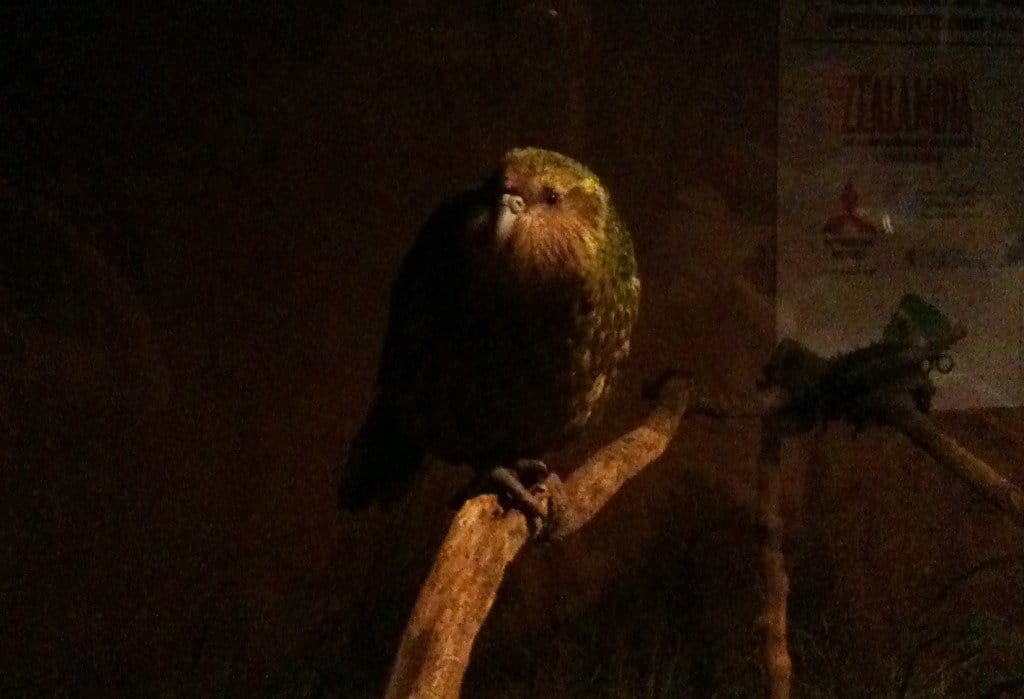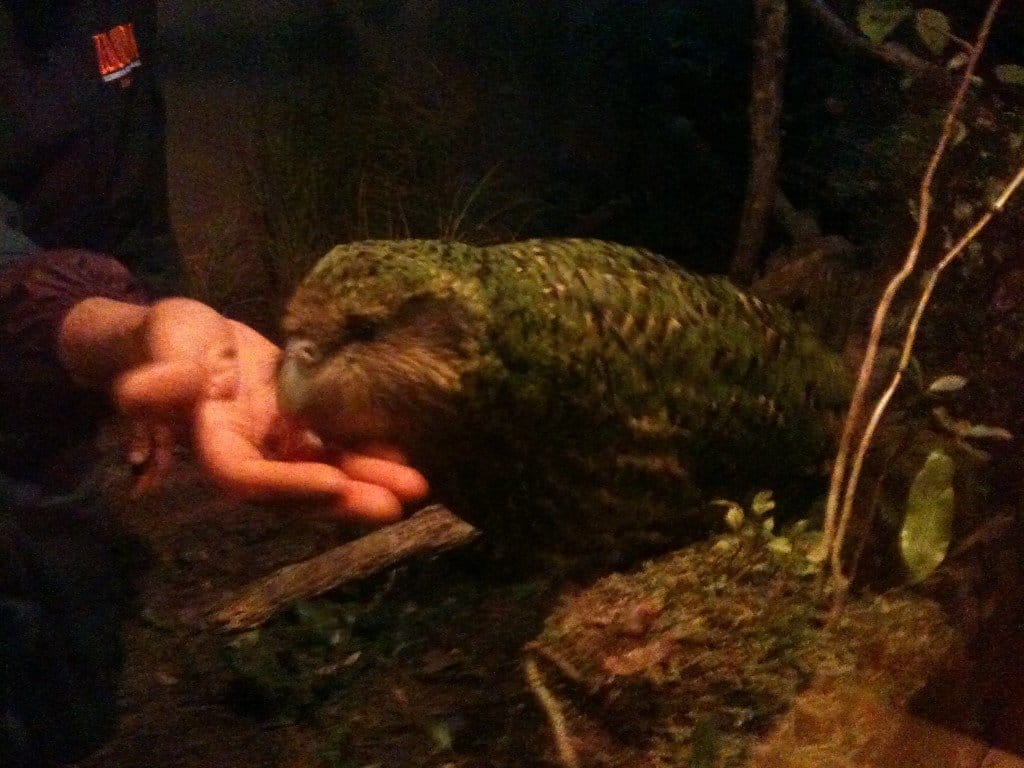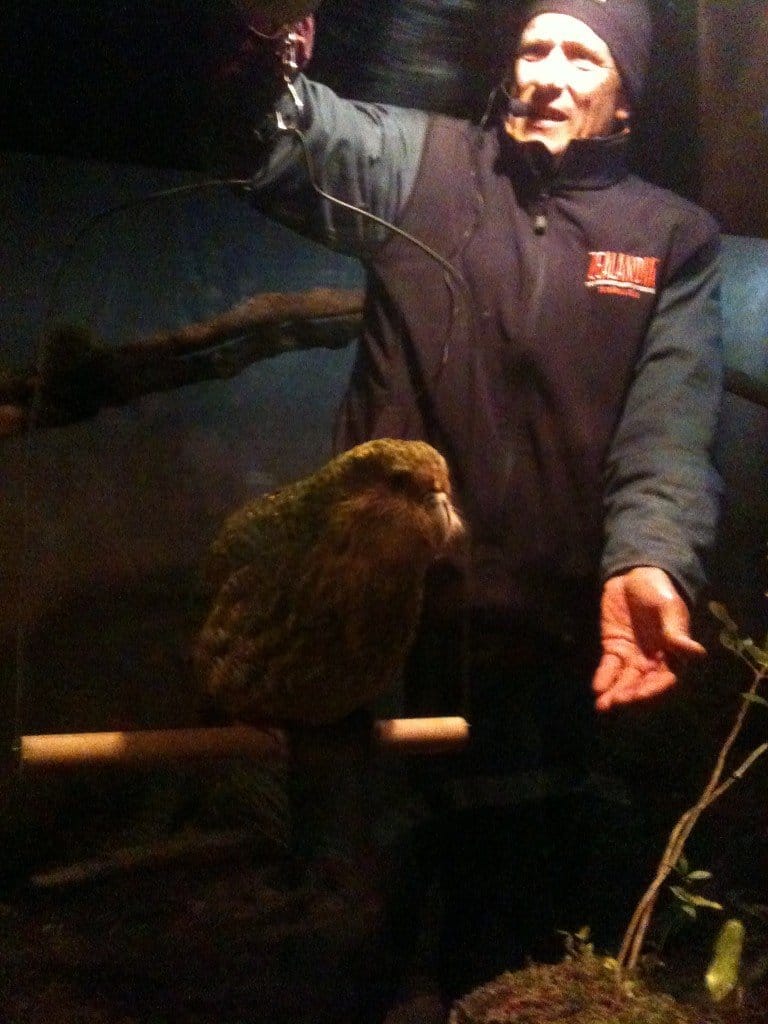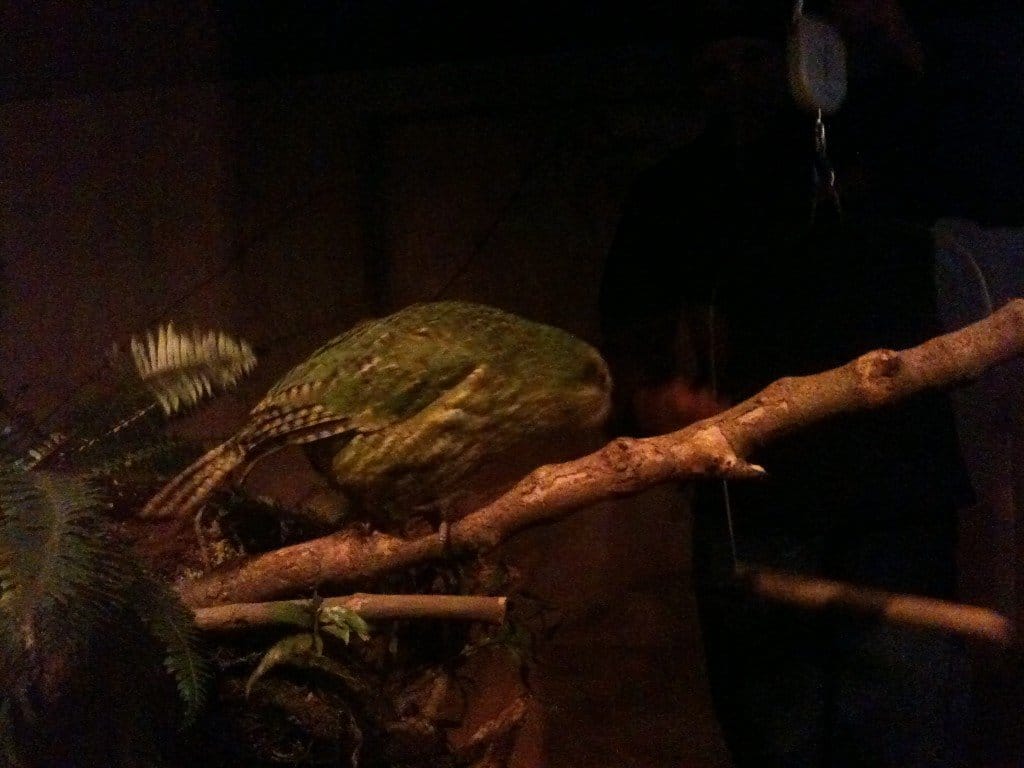Were one to draw up one of those lists of “top ten x to see before you die”, a formula that is perhaps a morbid way to phrase quite a jolly question, and you were to examine which ten birds you had to see in life, I would imagine the question would divide people endlessly. Just ten birds out of ten thousand? How could you formulate such a list? A few strike me as good contenders, the Resplendent Quetzal, certainly. Perhaps the Bornean Bristlehead or the Kagu. But you couldn’t have the list without a pitta, or a bird-of-paradise. But which pitta, which bird-of-paradise? Perhaps that is why when you search for the top ten birds of the world you instead get links to the top 50 or even 1000 (which hardly seems worth your while). One of the beautiful things about birding is there is so much good stuff out there to see.
But if you were to try and just list the top ten, I think most people would agree that the Kakapo wouldn’t be a bad choice to include. Kakapo are bird rock stars. They are rock stars in their family (or group of families, depending on what taxonomists have been smoking lately), a family that includes Scarlet Macaws, Crimson Shining-parrots, Golden Parakeets and Rainbow Lorikeets, and that is no mean feat. On the islands that make their home, they are rock stars compared to parakeets that dig up storm-petrels to eat (Antipodes Parakeet), parrots that kill sheep in order to eat (the incomparable Kea) and parrots that chew my guttering in the hope that it has turned edible since the last time they tried (Kaka). Here they second only to the kiwi (which are a family as opposed to a single species), and that is because the people here decided for some reason to name themselves after these flightless blind and rather elusive ground birds. (I guess New Zealanders really like flightless birds.) At any rate Kakapo matter.
This is a Kakapo (Strigops habroptilus), one of 131 in the world.
Part of it is because they are parrots, and most people really like parrots. Parrots are easy to identify, are smart and personable (well, the larger ones are smart) and often attractive. If parrots had calls like Old World warblers, as opposed to sounding not unlike what you’d imagine pterodactyl would (to quote a prospective flatmate that came by today), they’d probably claim all ten spots in the best birds. And part of the reason is they are so vanishingly rare. I’m not going to relate the full story of the decline and fall and then last minute save of the Kakapo here because a) it would take a whole post or more and b) I have to file one of these stories a week and I’m saving that one for a week I really have nothing else to say. But needless to say the Kakapo came almost as close as it is possible to going extinct without actually doing so. I say almost because that particular distinction actually falls to another New Zealand bird, the Black Robin, of which there were once just four (including just one breeding female). In spite of being pipped to that particular post Kakapo nevertheless came very close and indeed remain very close today. They require constant monitoring and management. They breed very slowly, in fact there is a decent chance that even if things continue to improve at a good rate they may not be out of the water in our lifetimes. These birds are in that bad a place.
Seeing a Kakapo is not a particularly easy proposition. They are extinct on the mainland and are only found on a few islands and all these islands are closed to the public. You know, because these birds are astonishingly rare and the general public are, while often well meaning, generally rather hopeless and prone to bringing all kinds of problems with them, such as accidentally introducing exotic species or standing there and prodding a wild animal in the belief this is an acceptable thing to do. Or stepping on the animal by accident (this is actually a problem even for trained biologists as Kakapo look like vegetation and live amongst vegetation).
Fortunately there is a solution to the problem of the unstoppable force of people wanting to see these birds and the immovable object that is the scientists trying to stop these birds being prodded to death. Sirocco the Kakapo is that solution. As a young chick young Sirocco (all Kakapo have names, by the way. There are only 131 of them) developed a nasty infection, and had to be taken into captivity in order to nurse him back to health. The recovery took long enough that in that time young Sirocco imprinted on humans instead of his own kind, and has therefore rendered the young parrot somewhat useless for the breeding project. But out of this annoyance came opportunity, as Sirocco is very fond of humans (and disinterested in his own kind), and has since been used as an avian ambassador on behalf of the species and conservation in general. He appears on BBC shows doing unmentionable things to presenters. And he sometimes travels around New Zealand giving people the chance to encounter one of their most endangered species in a semi-natural habitat.
Sirocco than Kakapo being handfed. The quality of these photos is not great because my fancy camera couldn’t handle the poor light and it isn’t done to flash this important bird.
It was in just such circumstances that I met Sirocco last night. He has been at the Karori Wildlife Sanctuary (or Zealandia, as it is persisting in calling itself) for the last month, entertaining Wellingtonians and visitors to the Rugby World Cup (which ended favourably for the host nation on Sunday I am happy to relate. I shudder to think what would have happened if they had lost in the final). The tour was a touch annoying to my mind (I came to see a Kakapo! Why would I want to watch a video about Kakapo first?) but as soon as we could see the large dumpy parrot I spent 25 happy and content minutes watching the thing walking, eating grapes and generally performing like a rock star. And then I had to leave so the next group could stare at the thing. Even the silly tour (sorry Karori, but it was. I still love you guys!) couldn’t detract from the joy of seeing a Kakapo.
Being weighed, a feat Sirocco will gladly perform in exchange for nuts.
Tedious people, and the world is full of them, even the birding world, will perhaps feel a frisson of relief that I didn’t one up them by seeing an actual listable Kakapo. There are complicated rules about what counts and what doesn’t when birding, and I’m not sure exactly how the rules work except that it doesn’t count if you see it in Mexico (or Hawaii) and you have to have the bird’s family tree in order to make sure that it’s ancestry in the area is pure enough or somesuch. These people are silly, missing the point and should be generally ignored. I was once on a forum and saw a birder asking how, on an upcoming visit to New Zealand, he might be able to get to Little Barrier Island. His reason for wanting to go there was because he wished to see Stichbirds there. Stichbirds are rare birds for sure, and they are most common there, in fact it is their stronghold. But the reason he wanted to go there to see them instead of Tiritiri or Kapiti or Karori was because that is where the last natural population survived, all other populations where translocations intended to “spread the risk” around a bit. The island is a closed sanctuary, containing some of the most important populations of several threatened birds, but what really mattered was seeing a bird in a way that conformed to the rules.
I strongly doubt this guy made it to Little Barrier and to be honest probably didn’t even enjoy seeing the Stichbird on Kapiti. And if he had he would have been putting at risk the very birds he professed to care about. And therein lies this weeks lesson. Ignore the rules (except the one about not dragging chains through marshes to flush Yellow Rails) and just get out there and enjoy whichever of the 10,000 birds you can find. That, and feel very jealous that I got to spend 25 minutes with a rock star.















Leave a Comment